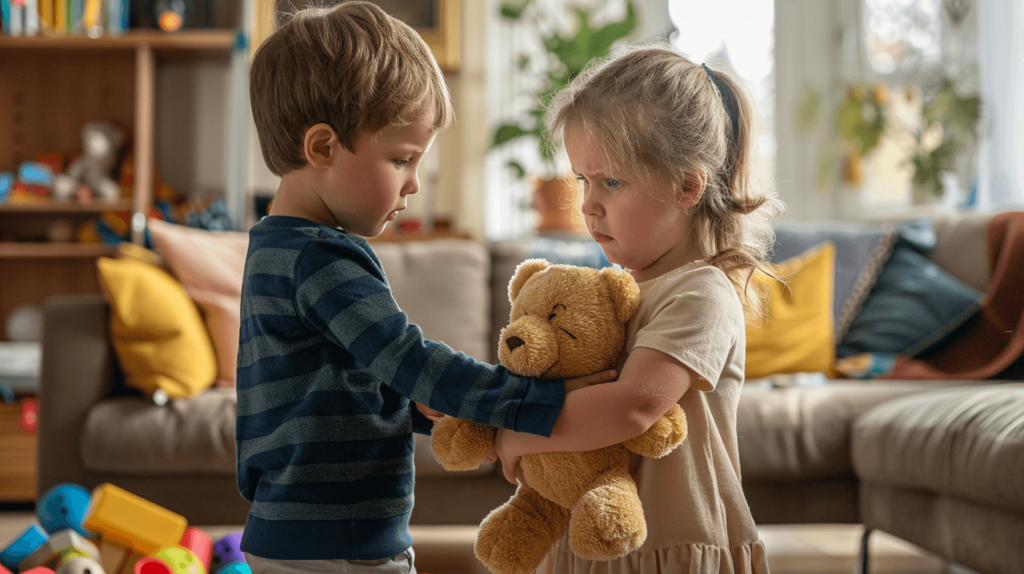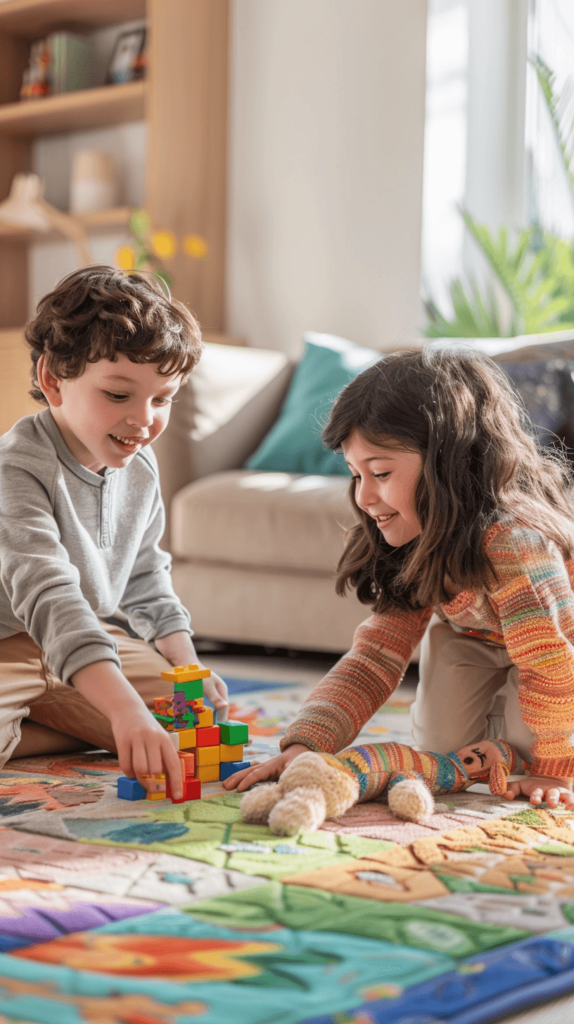If you’ve got more than one kid, chances are you’ve seen your fair share of sibling rivalry with arguments and tiffs. One moment they’re sharing toys, and the next they’re in a full-blown argument over something as small as who gets the last cookie. It’s a regular scene in households with siblings, but let’s be honest, it can drive us parents up the wall.

This site contains affiliate links; please view the disclosure for more information.
Now, feeling a bit frazzled by their squabbles is totally normal. Trust me, we’ve all felt that way. The trick lies in figuring out the root of these disagreements. Sometimes, it’s just about wanting more attention. Other times, it’s about establishing their own space and identity within the family. Kids are still learning how to express themselves and handle their emotions, and this can often lead to conflicts with siblings.

Sibling Rivalry Conflict Solutions
Setting clear ground rules is a good starting point. It’s about teaching them that certain behaviors won’t fly. For instance, if they argue over a video game, maybe that game gets put away for a while. This approach helps them understand that their actions have direct consequences.
Encouraging teamwork is another strategy that can make a big difference. Plan activities that require them to collaborate. It could be as simple as making a meal together, or as involved as a family DIY project. This not only helps them bond but also shows them the value of working together.
Spending individual time with each child is important too. Sometimes, the root of sibling rivalry is the fear of not getting enough attention. Regular one-on-one time with each child can make them feel valued and understood. Whether it’s a quick game of catch or a short drive to grab some ice cream, these moments matter.
Staying calm during their disputes is essential. It’s tough, I know. But when kids see us handling conflicts with composure, they learn to emulate that behavior. Taking deep breaths and staying calm can help them learn how to solve their problems without fighting.
Understanding Each Child’s Needs
But it’s not just about managing the conflicts; it’s also about understanding your children’s unique personalities and needs. Some kids might be more sensitive, needing extra reassurance, while others might seek independence and require different forms of support. Recognizing these differences and addressing them individually can help reduce rivalry.
Also, celebrating their achievements as a team can foster a sense of unity. When one child accomplishes something, make it a family celebration. This helps build team spirit and reduces feelings of jealousy.
Another important thing is to listen to their worries without passing judgment. Sometimes, children just need someone to hear them out. By offering a listening ear and validating their feelings, you can help them work through their emotions in a healthy way.
Teaching empathy and understanding is important. Encourage your kids to put themselves in their sibling’s shoes. This can be done through simple discussions about feelings and emotions. Kids learn to care about and understand each other’s needs better when they are taught empathy.

15 Tips for Managing Sibling Rivalry
- Encourage open communication by teaching children to express their feelings calmly and respectfully.
- Model good behavior by demonstrating patience, empathy, and active listening.
- Create clear rules about respectful behavior. Ensure everyone understands them.
- Praise positive interaction by recognizing and rewarding harmonious play.
- Designate personal spaces for each child. Reduce competition and foster respect.
- Teach problem-solving skills. Help children brainstorm and practice finding solutions.
- Set up family meetings regularly to discuss issues and improve relationships.
- Encourage teamwork activities by planning cooperative tasks like puzzles or team-based games.
- Use time-outs for cooling down. Suggest short breaks when tempers flare.
- Empathize with each child. Validate their feelings and let them know they are understood.
- Create a conflict resolution corner. Children can talk things out peacefully there.
- Implement a “talk it out” routine for siblings to discuss conflicts and find resolutions.
- Encourage shared interests by finding activities both children enjoy.
- Practice turn-taking with toys, games, and other resources to foster fairness.
- Use storytelling to share tales about sibling cooperation and understanding. Highlight positive behavior.
While sibling rivalry is a common part of family life, it doesn’t have to be a constant struggle. With patience, understanding, and a few strategies up your sleeve, you can help your kids learn to live together more peacefully.



